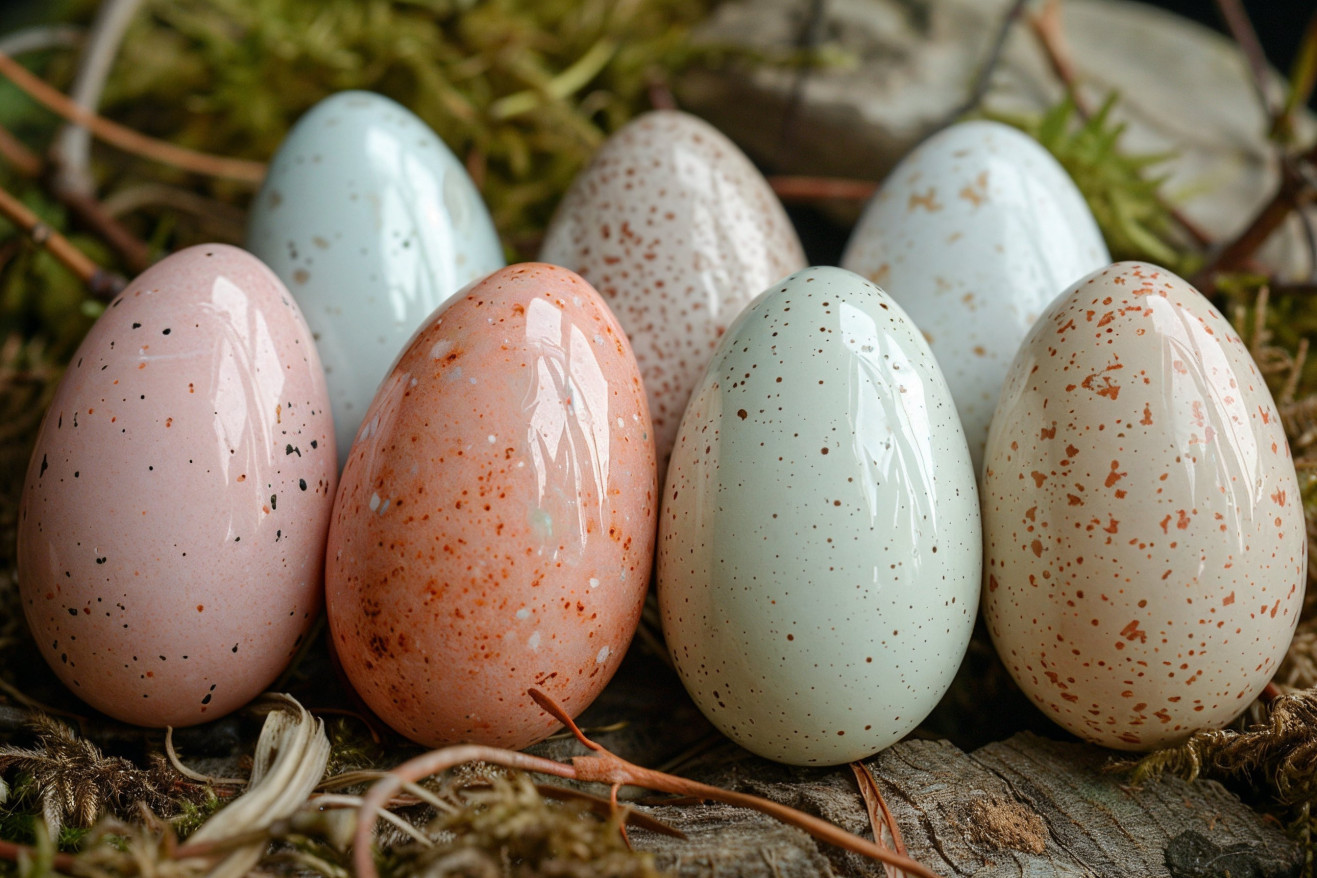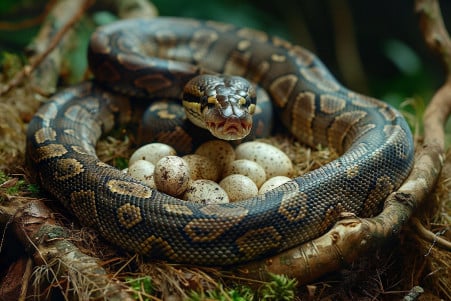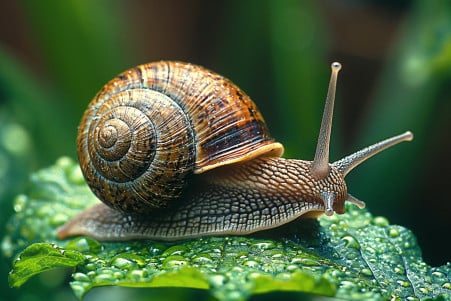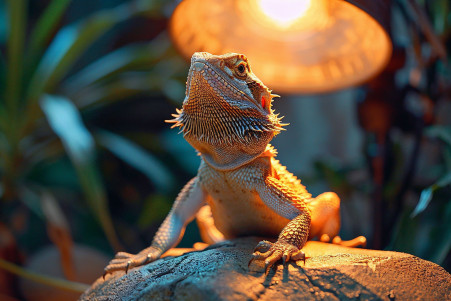What Do Lizard Eggs Look Like? A Visual Guide
9 May 2024 • Updated 7 May 2024

If you’ve ever stumbled upon a clutch of small eggs in your backyard and wondered if they were laid by a lizard, you’re not alone – lizard eggs are incredibly diverse in terms of shape, size, and color. However, most lizard eggs are small, leathery, and oval and can range in color from off-white to tan, green, and even pink, depending on the species. They are typically laid in damp soil, leaf litter, or rotting wood and can sometimes be mistaken for small stones.
In this article, we’ll explore scientific papers from the fields of herpetology and reproductive biology to reveal in-depth descriptions and images of lizard eggs from a variety of species from across the globe. This survey will enable you to recognize different kinds of lizard eggs, appreciate their incredible variety, and learn about the reproductive behaviors of these reptiles. Let’s take a closer look at the fascinating details of nature’s handiwork.
What do lizard eggs look like?
Egg-Laying Behaviors and Nesting Strategies
Lizards show an incredible range of egg-laying behaviors and nesting strategies. Females lay their eggs in clutches, and the number of eggs in each clutch can depend on the species and the female's age or size. According to Critter Control, smaller, younger females tend to lay fewer eggs than larger, older females.
In terms of choosing a nesting site, lizard moms are very picky. They often choose dark, moist places like under woodpiles, sheds, decks, shrubs, and tall grasses because these areas provide the right conditions for the eggs to incubate. Older, more experienced females may be better at finding safe places to lay their eggs, which may increase the likelihood that their eggs will survive to hatch.
Some lizard species have egg-laying behaviors that are especially interesting and that show the incredible diversity of nature. For example, the three-toed skink (Saiphos equalis) is in the process of evolving from laying eggs to giving live birth, according to a study from The University of Sydney. This species keeps its eggs inside the mother for a long time, and some of the eggs hatch just five days after they're laid, which is a much shorter time than it takes for other skink species.
The time and frequency of egg-laying can also differ between lizard species. While some species only lay one clutch per mating season, others, according to Critter Control, can lay two to three clutches during the season. These differences show how adaptable lizards are to their environments and reproductive needs. As we'll see when we look at the hatching process and the early life stages of lizard hatchlings, this adaptability is a key part of the journey that takes these reptiles from eggs to adults.
Hatching and Early Life Stages of Lizard Hatchlings
After an incubation period that can last anywhere from a few weeks to several months, lizard eggs eventually hatch, and the hatchlings break free from their shells. As noted by Behavior and morphological adaptations of reptiles, newly hatched lizards can often seem lethargic and may take a little while to become active and start eating. It is also important to note that proper lighting, temperature, and humidity are all important factors in ensuring that hatchlings are able to thrive and grow, as discussed in What to Expect When You're Expecting: Baby Bearded Dragon Care.
Hatchlings can face a number of threats in their early days, including predation, dehydration, and competition for food and other resources. That said, some lizard species have evolved special adaptations or behaviors to help protect their hatchlings, such as tail autotomy (the ability to detach and regrow their tails), which is explained in Behavior and morphological adaptations of reptiles. This defense mechanism can help draw a predator's attention away from more vulnerable parts of the body and give the hatchling a chance to escape.
In the next section, we'll take a closer look at the complex process of hatching and learn more about the incredible resilience and adaptations that help hatchlings survive and thrive.
Hatching: From Egg to Emergence
When the incubation period is coming to a close, the lizard embryo will start to prepare for hatching by moving into position within the egg. According to Incubation of Reptile Eggs, the hatching process usually begins with the hatchling creating a small slit or 'pipping' in the eggshell. After this, the hatchling will then work its way out of the egg over the course of a few hours or even days, taking breaks as necessary. It is stressed in the Incubation of Reptile Eggs article that it is important not to rush or help the hatchling during this process, as they will come out when they are ready.
The success of hatching is dependent on several factors, including the right incubation temperature, humidity, and the strength of the eggshell. According to Phys.org, even if lizards lay their eggs in cooler areas, the nests can still reach temperatures that are too high for embryonic lizards. Exposure to temperatures that are above average but not lethal can have a negative impact on a lizard's physiology and behavior. With a better understanding of the hatching process and the things that can impact it, we can now move on to the specifics of lizard eggshells and how they impact the requirements of incubation.
Eggshell Properties and Incubation Requirements
Lizard eggshells are highly diverse in terms of their thickness, structure, and composition among species, which can have a significant impact on properties such as light transmittance and gas exchange. In fact, a comparative analysis of reptile eggshells revealed that the calcium carbonate content of these shells can vary from 89% to 96%, which is a wide range that suggests a high level of mineralization.
The thickness and composition of lizard eggshells can impact the incubation requirements and embryonic development. For example, as a study demonstrated, thicker eggshells with lower light transmittance can offer more protection from environmental conditions, but they can also reduce gas exchange, which may affect the development of the embryo.
In addition to the properties of the eggshell, it’s important to note that the right temperature and humidity levels are important for successful embryonic development and hatching. Yet, as the study mentioned above, the light environment during incubation can also impact the development and hatchling characteristics of certain lizard species, but this effect depends on the properties of the eggshell. This interaction between eggshell properties and environmental conditions is a great example of the complex adaptations that have evolved in these animals.
Knowing the specific properties of the eggshells of different lizard species and how they impact the requirements for incubation is important for conservation and captive breeding. It’s also important to know how these factors interact. By doing so, we can learn more about the amazing adaptability and resilience of lizards.
Challenges and Conservation of Lizard Eggs and Hatchlings
Lizard eggs and hatchlings face a number of challenges that can impact their survival. Fuhui Appliances explains that issues with incubation, including temperature and humidity changes, can lead to problems with embryonic development and hatching success. Meanwhile, predation, loss of habitat, and other environmental factors also present major hurdles.
As research in PMC explains, early hatching can increase a hatchling's likelihood of survival in the wild, even with the phenotypic advantages of late-season developmental conditions. However, early hatching can also leave them more vulnerable to a number of risks and obstacles.
Conservation focuses on protecting lizard nesting areas, as well as monitoring the populations of eggs and hatchlings and educating the public about the importance of these animals. As PMC points out, it's important to make sure that their habitats are intact and that human intervention is limited if lizard species and their eggs are going to survive in the long term. With these goals in mind, we can help ensure that the incredible diversity of lizard eggs and hatchlings is preserved for the future.
Conclusion: The Wonders of Reptile Reproduction
Reptiles lay eggs with shells on land, even if they are aquatic species. As Biology II points out, the amniotic egg is a defining characteristic of amniotes and provides protection and nutrients to the embryo. The shell allows for gas exchange, the albumin provides water and protein, and the yolk is the embryo's food source.
Reptiles reproduce sexually and through internal fertilization, and some species are ovoviviparous, meaning the eggs are retained inside the mother until they hatch, or viviparous, meaning the offspring are born live. As Biology LibreTexts observes, even aquatic reptiles lay their eggs on land.
Lizard eggs are generally leathery and porous, allowing them to expand as the embryo grows, according to Britannica. However, the shells of some lizard eggs are hard and don't expand. Meanwhile, viviparity and a range of placental adaptations have evolved in some lizard species, illustrating the diversity of their reproductive methods.
As we learn more about lizard eggs, we can better understand the wonders of the natural world and the complex interconnections that make up life on Earth.


